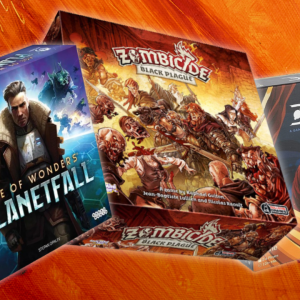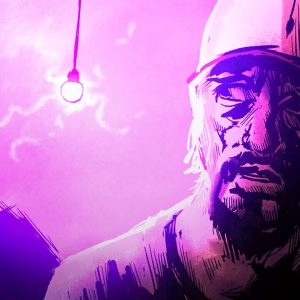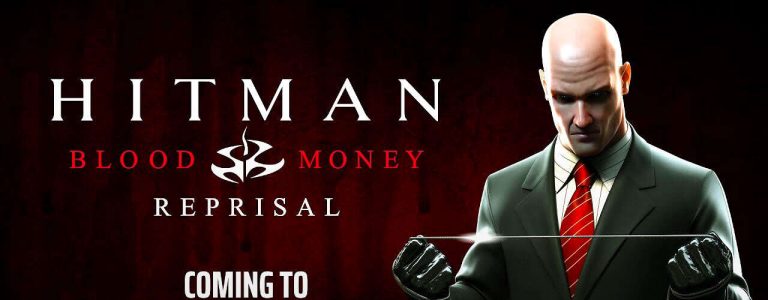[ad_1]
Update: It’s #FoundersAndLegends day! Today we celebrate the auspicious history of tabletop gaming, and how it’s success paved the way for our favorite games of the modern era. The D&D community is celebrating over on Twitch, and donating money to ExtraLife to raise money for children’s hospitals across the country – consider giving if you can.
So many of the 2019-2020’s biggest games are big, elaborate RPGs, and this got us thinking about how the genre has evolved from its pen and paper roots. If you’ve never played a tabletop role-playing game like Dungeons & Dragons, Call of Cthulhu or Cyberpunk 2020, you may not realize just how much modern RPG video games — all video games, really — owe to their venerable tabletop predecessors.
Fundamental game features we take for granted like item inventories and character customization are the direct result of the work Gary Gygax and Dave Arneson began in Lake Geneva, Wisconsin nearly 50 years ago. RPG series like The Elder Scrolls, Fallout, Dragon Age, Final Fantasy and many, many more simply wouldn’t exist if it weren’t for the innovations pioneered by tabletop gaming.

Using the broadest definition, any tabletop game could technically be considered a role-playing game. Even a game like chess puts the player in the abstracted role of a commander in a battle. For our purposes, though, we’ll define a tabletop role-playing game as one that places paramount importance on player choice through a fantastical mix of exploration, combat, social interaction, statistical advancement, and practical logistics. And dice. Lots and lots of dice.
In the digital realm, early programmers first began writing text-based computer RPGs on university and government mainframes in the 1970s, starting with Will Crowther’s Colossal Cave Adventure in 1976. Then, as now, role-playing video games have included as many of the elements above as possible in an effort to translate the shared storytelling of a tabletop game into a self-contained electronic medium. In a tabletop game, the Game Master (or Dungeon Master, Keeper, Referee or whatever particular terminology a game decides to use) populates the game world and adjudicates its rules for the players. Thus, the entire evolution of video game RPGs — from simple text-based forerunners like Colossal Cave Adventure and Zork to modern titles like Monster Hunter: World and The Witcher — can be seen as an attempt to perfect a virtual Game Master. This is no small task, as human GMs are capable of adapting to a limitless variety of player choices, changing the entire game on the fly depending on how the players choose to play it.
East & West
Most gaming historians tend to view the development of computer and console RPGs as bifurcated into so-called eastern and western games. The distinction has blurred over time, but there nevertheless remain important differences in how each style goes about emulating the style and play of tabletop RPGs.
Western RPGs tend to focus on creating ever larger and more intricate sandboxes for players to explore. The goal is to give players the freedom to attempt as many types of activities as possible in any order, which means that many of the player’s actions won’t always be sufficiently reflected in the main narrative. Take, for example, the character Caesar from Fallout: New Vegas. Caesar is an important character who offers the Courier a variety of missions, allowing the Courier to advance within the Legion faction. As a major faction leader he’s widely known and generally despised by other factions. Yet if you decide to kill him, there’s no effect on the Courier’s standing with any faction save the Legion itself. This sort of narrative dissonance can easily happen in games that attempt to create the illusion of limitless free will. Yet many western RPGs continue to aspire to do just that because of the tremendous immersive effect it has on players, and because the freedom to attempt any activity was and remains a huge selling point for tabletop RPGs.
Eastern RPGs, or “JRPGs” as they’re sometimes called (though that term’s emphasis on Japan ignores similar styles of games from other Asian countries), on the other hand, skew more toward tightly-woven stories with precisely timed beats that players will hit regardless of what choices they make. These RPGs emphasize character and party development, stat progression, and emotional twists. Rather than a more freeform narrative built around player agency, they usher players down linear paths painstakingly crafted by the developers to emulate the delicately woven narratives and grand emotional stakes that long-running tabletop campaigns can attain.

Perhaps these two styles evolved separately as a result of audience preference. It’s just as likely, however, that the split arose because it was simply too difficult to meet both goals simultaneously. While a western RPG like Skyrim gives you myriad options for how to spend your time between story quests, there’s no guarantee that your particular Dovahkiin’s obsession with, say, thievery will have any bearing on the main plot. On the other hand, Final Fantasy XV might deliver an epic, cinematic climax that carefully incorporates all of your character’s exploits, but you aren’t likely to find your playthrough all that different from someone else’s.
It’s a rare game indeed — only the best entries in the Mass Effect series and maybe The Witcher 3 come to mind — that can successfully combine both the broad freedom of choice of a western RPG with the emotional catharsis of an eastern RPG. Even then there are limitations on how far down the rabbit hole one can go. At least until Westworld becomes a reality, tabletop RPGs remain the leaders in providing open worlds to explore while still ensuring that meticulously designed narrative elements and even the most outlandish player choices work in harmony.
Advancement
Perhaps the most important contribution D&D has made – not just to RPGs but to the entire video game industry – is the concept of character progression. In creating his Blackmoor campaign for the Chainmail “fantasy supplement” ruleset, Dave Arneson pioneered a number of innovations that he and Gary Gygax would use as the basis for Dungeons & Dragons. Perhaps Blackmoor’s greatest contributions were the concepts of experience points and character levels. Almost by accident, Arneson touched on one of the most addictive qualities of role-playing games, one that has come to be a core mechanic of nearly every genre of video game.
For some tabletop players, the rewards unlocked by leveling up a character can be more gratifying than the broader story and gameplay. The same is sometimes true in video games. The massive scope of Fallout 4 is impressive and its conclusion is more or less satisfying, yet one of its most compelling aspects is the simple thrill of unlocking new abilities in the S.P.E.C.I.A.L. system. Games like World of Warcraft place such a heavy focus on character advancement that players often feel the need to grind their way to the level cap before the “real fun” even starts.
Leveling and character progression now exist to some degree in almost every video game. While you may not “Level Up” in a game like Dead Space, you do earn the ability to upgrade Isaac’s weapons and armor, essentially unlocking new attacks and defenses. This is very similar to the skill point progression system in Cyberpunk 2020, which doesn’t have levels at all. Instead, as you progress you get to enhance your character with new equipment, body modifications, and training.
Earned abilities and upgrades are tangible, immediate evidence of character growth in the game world that create a positive feedback loop. They both reward the player’s efforts and allow them to progress further, thereby attaining even greater rewards. Unlockables are so ingrained in all genres of gaming today that it’s easy to forget they’re the direct descendants of rudimentary progression systems from early RPGs like 1987’s Dungeon Master. And, of course, those games were themselves attempting to replicate the excitement of leveling up found in their tabletop progenitors. By the late 80s the roster of tabletop RPGs had expanded beyond D&D to include a huge variety of new games like Runequest, Metamorphosis Alpha, and Call of Cthulhu, each with their own spin on character progression.
Combat
Like the historical wargames it grew out of, the first Dungeons & Dragons combat system was (along with most early TRPGs) slow and tedious to resolve. It required detailed knowledge of the rules, as well as a significant amount of arithmetic to determine whether an attack would hit, and how much damage was dealt if it did. This wonkish devotion to complex combat continued for decades across the entire industry. Though D&D combat has gotten much more intuitive — especially with the advent of Fifth Edition — it hardly seems like the sort of thing that would lend itself to high-intensity video games. When IGN spoke to Mike Pondsmith, the creator of the Cyberpunk RPG, about his work on CD Projekt Red’s Cyberpunk 2077, he explained that there were “things that were easy to describe in pen and paper that would be amazingly difficult to do in [a video game].”
The earliest video games derived their excitement from the application of quick reflexes and accurate control, and the same remains true for many modern shooters and fighting games. Tabletop role playing games, on the other hand, by their very nature can’t simulate combat in real time. They rely on structured rounds of combat with abundant time for planning in between actions. As a result, the challenge becomes maximizing your character’s prowess instead of your own skill. No matter how experienced you are as a D&D player, if your character isn’t strong enough for the encounter they’re facing, without some extreme good luck they’re in serious trouble.
Most early video game RPGs adopted this focus on strategic turn-based combat. Some modern games like Pillars of Eternity II: Deadfire still use pure turn-based combat. Knights of the Old Republic even takes this a step further, adhering so rigidly to tabletop combat rules that players can literally view their virtual dice rolls during pauses between rounds. Even in this more cerebral, slowed down format, though, fights remain engaging and suspenseful – just as they were in tabletop settings 40+ years ago.
World of Warcraft’s auto attacks and pre-planned ability rotations provide perhaps the quintessential example of how rewarding a character’s abilities rather than the player’s reflexes. While that system has waxed and waned in complexity over the years, in every iteration the goal has been to mimic the way tabletop games simulate heroic deeds through random number generation. Those numbers are increased or decreased based on character abilities and equipment, then compared to predefined probabilities to determine not just hits and misses, but also the specific type of hit or miss. (Incidentally this not only emulates but actually outpaces most tabletop RPGs in terms of combat detail. Tabletop games usually specify the requirements for critical hits, but treat further distinctions as little more than flavor text.)

As advances in technology have allowed for more complex actions on the part of the player, many RPGs have adopted combat mechanics that incorporate aspects of first or third person shooters. But even those often retain at least an optional alternative that slows things down to echo the tabletop style. Sometimes the slowdown is literally just that, like in Red Dead Redemption 2’s Dead Eye Mode. While Dead Eye Mode gives the player additional time to select targets, it still relies on the player’s aim to paint targets before Arthur begins firing.
The Elder Scrolls series takes things a step further. As long as the targeting reticle is aimed at a target, the combat system engages a pair of contrasting probability formulas to determine if an attack hits or is blocked in real time. The Fallout games combine a default first person shooter mechanic with the option to enter the V.A.T.S. targeting system, which makes attacks transparently percentage based. The likelihood of success is totally divorced from the player’s hand-eye coordination and reaction time. Instead, success is a product of careful planning and smart decision making. None of this is to say that high-speed, coordination based games like Fortnite are a bad thing, only that the slowed down, meticulous style of combat pioneered by tabletop RPGs continues to have its own unique appeal.
Party Up
Perhaps the most familiar translation from the tabletop to the television (or monitor) is the adventuring party. Almost every tabletop game out there is meant to be played by a group of players with characters whose abilities and personalities combine in interesting ways. It may seem natural now, but when Dungeons & Dragons was first developed, as gaming historian Jon Peterson’s states in his truly excellent book Playing at the World, the shared storytelling of cooperative gaming was a novel concept. It quickly became clear, however, that a shared adventure was more fun than going it alone.
To capitalize on that innovation, video game RPGs have leaned into the adventuring party mechanic to varying degrees. In modern MMORPGs like WoW, higher-level raids can only be successfully completed by guilds of players, often requiring coordination among different classes of characters. This allows players to express and empower themselves through their characters’ specialties. The fighter and the healer are both important but in different ways. They each have their own opportunities to shine and, dare we say, roles to play. That’s a wholly different experience than being part of a Halo fireteam where everyone has pretty much the same abilities. This concept of party coordination draws directly from tabletop RPG parties, in which solid party balance and adaptability are essential survival tools.
Morality
Even the earliest version of Dungeons & Dragons contained the concept of Alignment (which you’ll probably recognize from a pile of years-old memes) to help guide characters’ decisions and govern their relationships with NPCs. Many video game RPGs (as well as a slew of games from other genres) adopt a similar system. They can range from something as simple as Fallout 3’s Karma meter (which really only rewards good acts) to the complex moral questions in the Mass Effect series, for which no single answer is optimal, but each choice has its own outcome. If you play your character in a particularly virtuous way, certain NPCs will interact with you more favorably. A high (or low) moral standing in Mass Effect or Skyrim can open up dialogue options and even abilities that would be unavailable to a character that had made different choices. Again, this is designed to simulate the way tabletop Game Masters present their players with the consequences — both good and bad — of complex moral decisions. Stakes like these force players to really invest in their characters and take responsibility for their actions rather than just slaughter everybody they meet (though that happens sometimes, too…).
The best GMs present their players with difficult decisions and ensure that – no matter what choice the players make – there will be ramifications later on. This adds a layer of verisimilitude and allows the player’s actions to have a measurable impact on the game world, even if it takes some time to see that payoff. Video game RPGs have adopted this technique as well. If you release the super mutant Fawkes from his cell in Fallout 3, for example, he’ll resurface later in the game to help the Lone Wanderer. If the player has enough Karma, Fawkes can also be recruited as a companion. Some decisions even have ramifications that aren’t felt until later games. If the player spares the spymaster Thaler in the first Witcher game, he resurfaces with a gift for Geralt in the sequel, Assassins of Kings. (Weirdly, Thaler returns in the third installment of The Witcher regardless of whether he lived or died in the first game. Maybe that goes to show how hard it is to replace a good GM!)

It’s impossible to understate just how high a standard tabletop RPGs have set for their video game counterparts. Video games continue to get more and more elaborate with bigger maps, sharper visuals, deeper stories and smarter AI. And yet, no matter how advanced the technology and production values become, game developers will still strive to reproduce the “go anywhere, do anything” feeling of tabletop role-playing games. And who knows? Maybe one day a video game will actually be able to replicate a good GM’s ability to generate custom adventures tailored to even the weirdest player choices. It might even be advanced enough to seamlessly blend a fully integrated narrative with truly infinite player freedom.
It’ll never replace the feel of a good set of dice, though.
Looking to get into TRPGs yourself? Have a look at our guides on which tabletop RPG is right for you, or how to start playing Dungeons & Dragons.
Adam DiLeo loves tabletop RPGs. If you don’t, @FireballMcPhan would be glad to make a persuasion check.
[ad_2]
Source link























